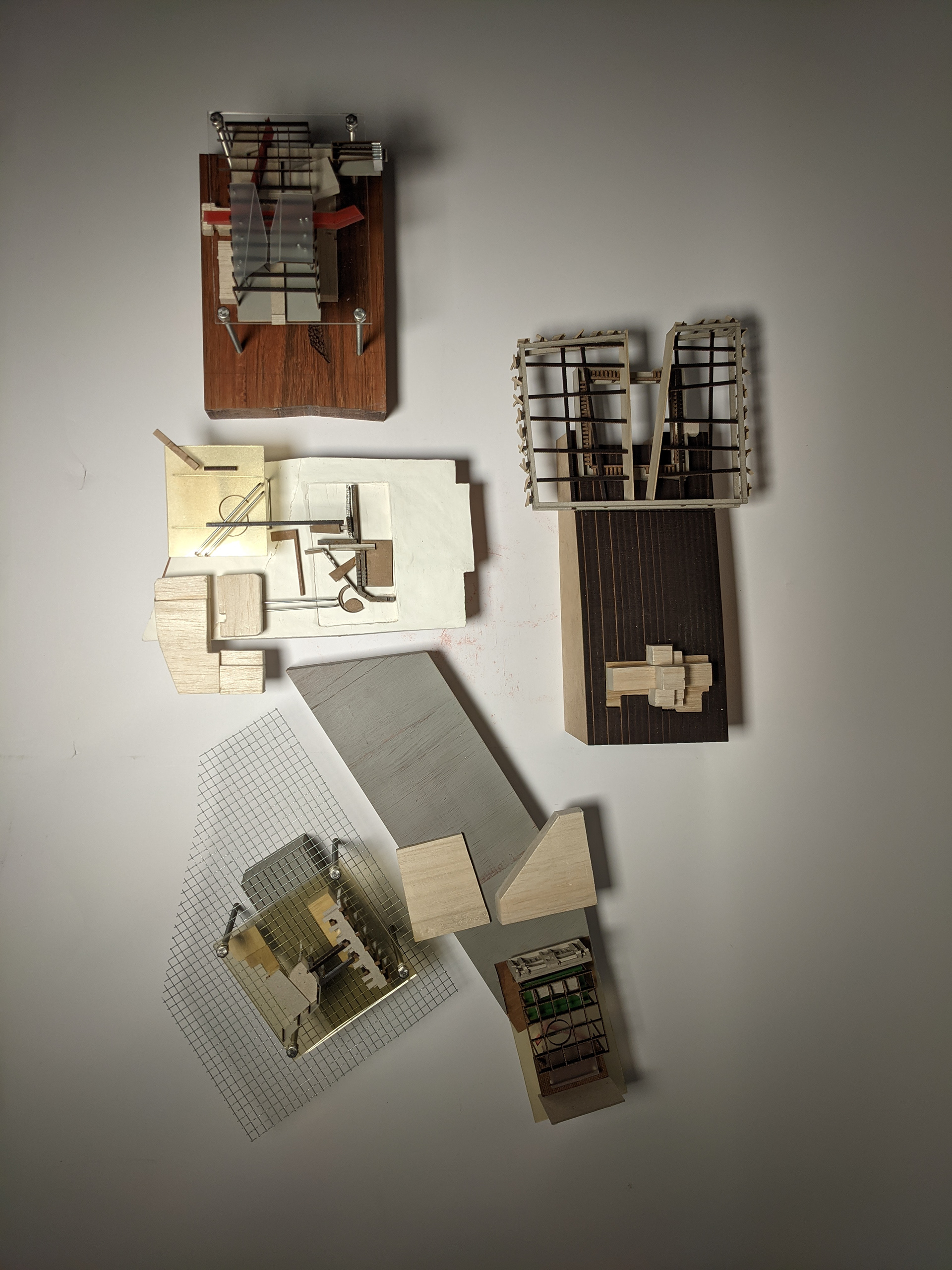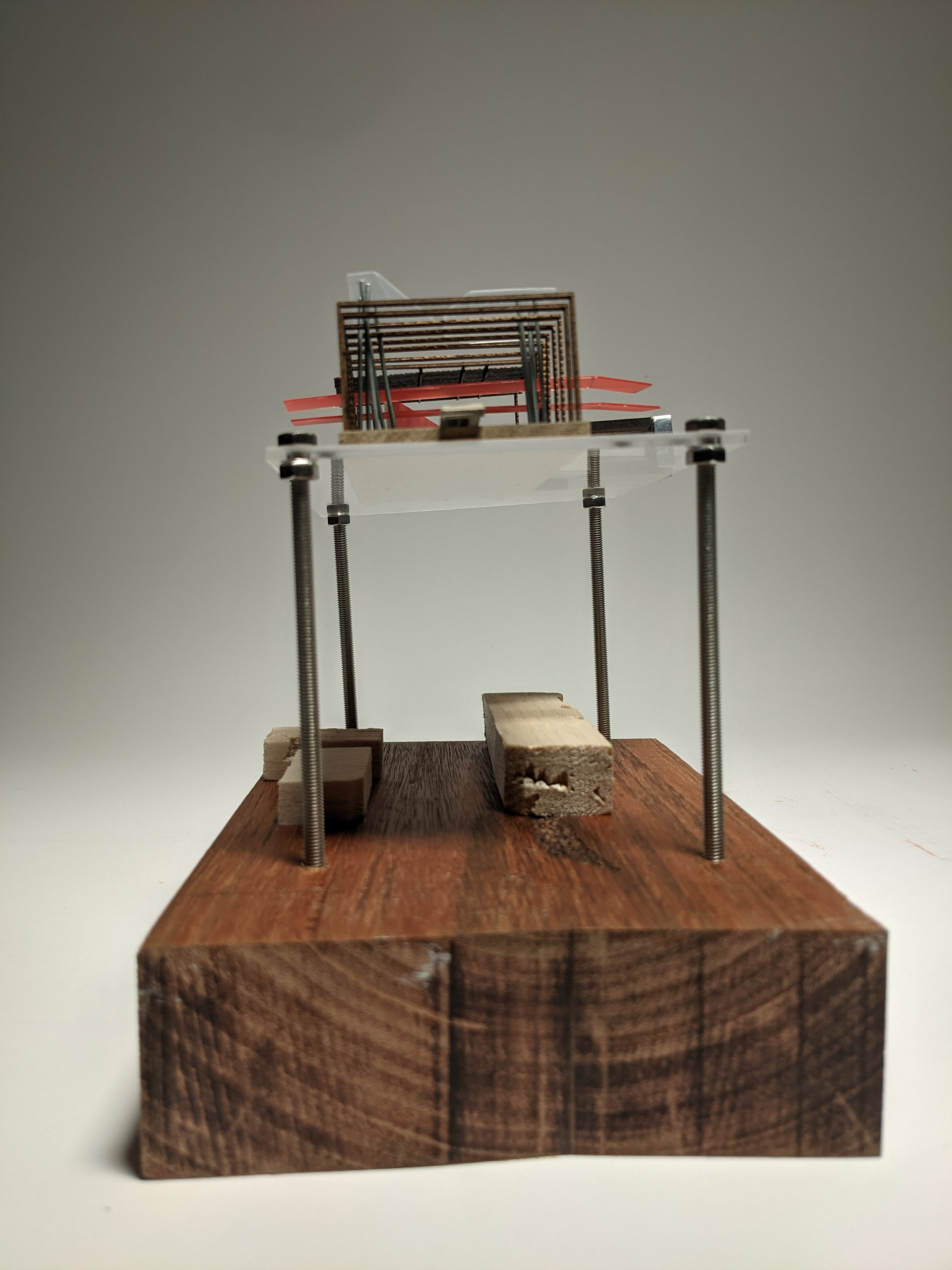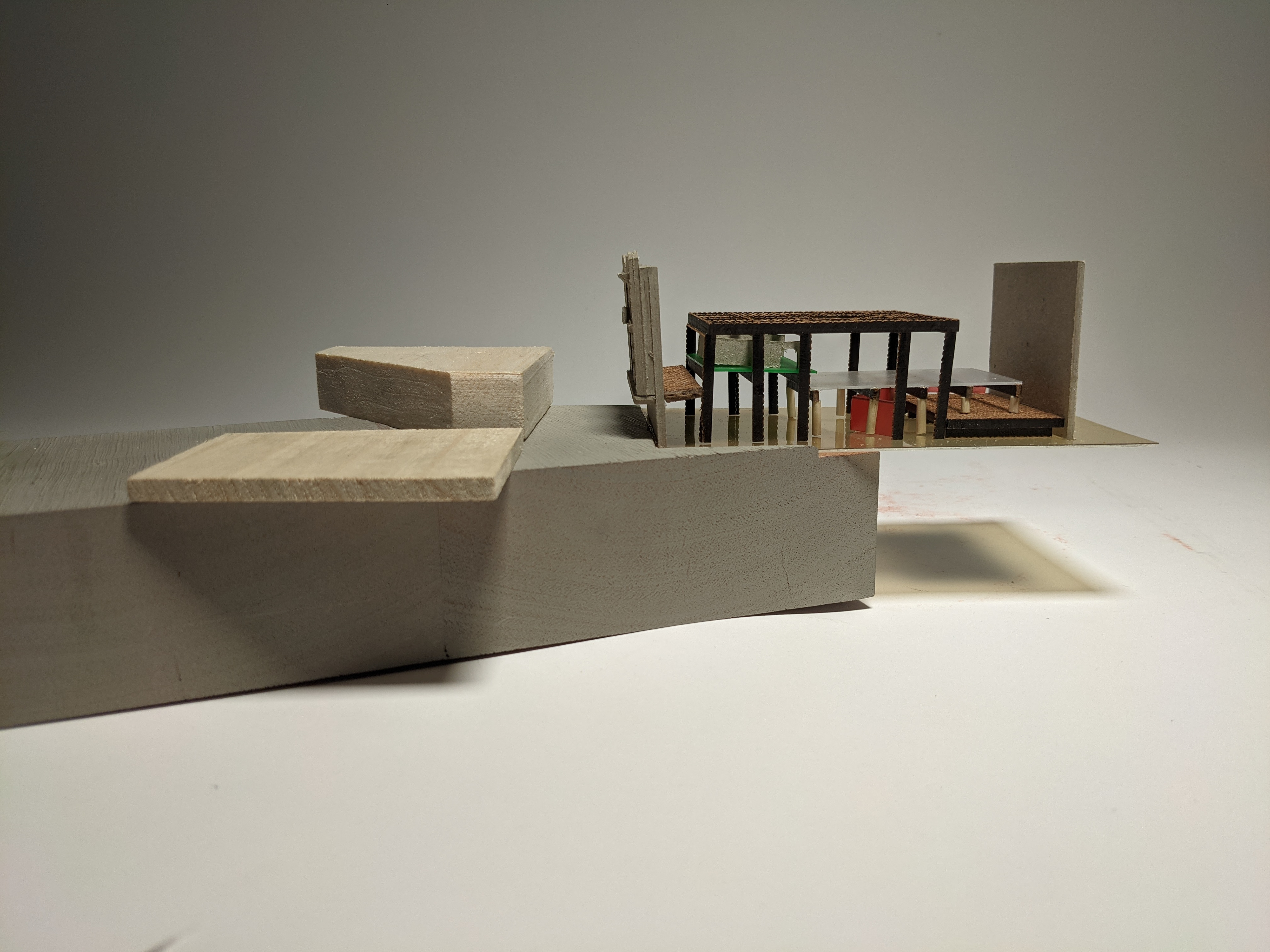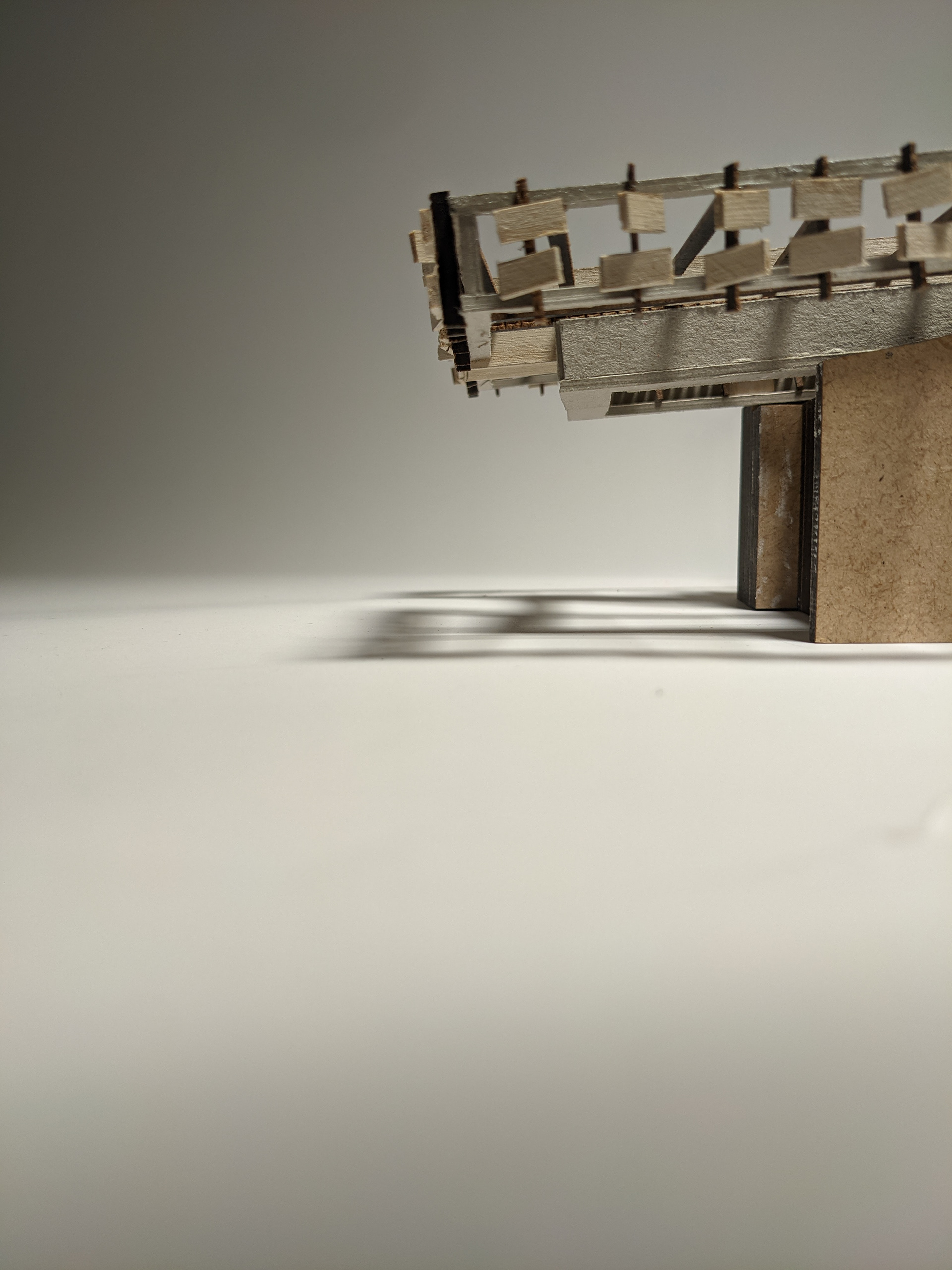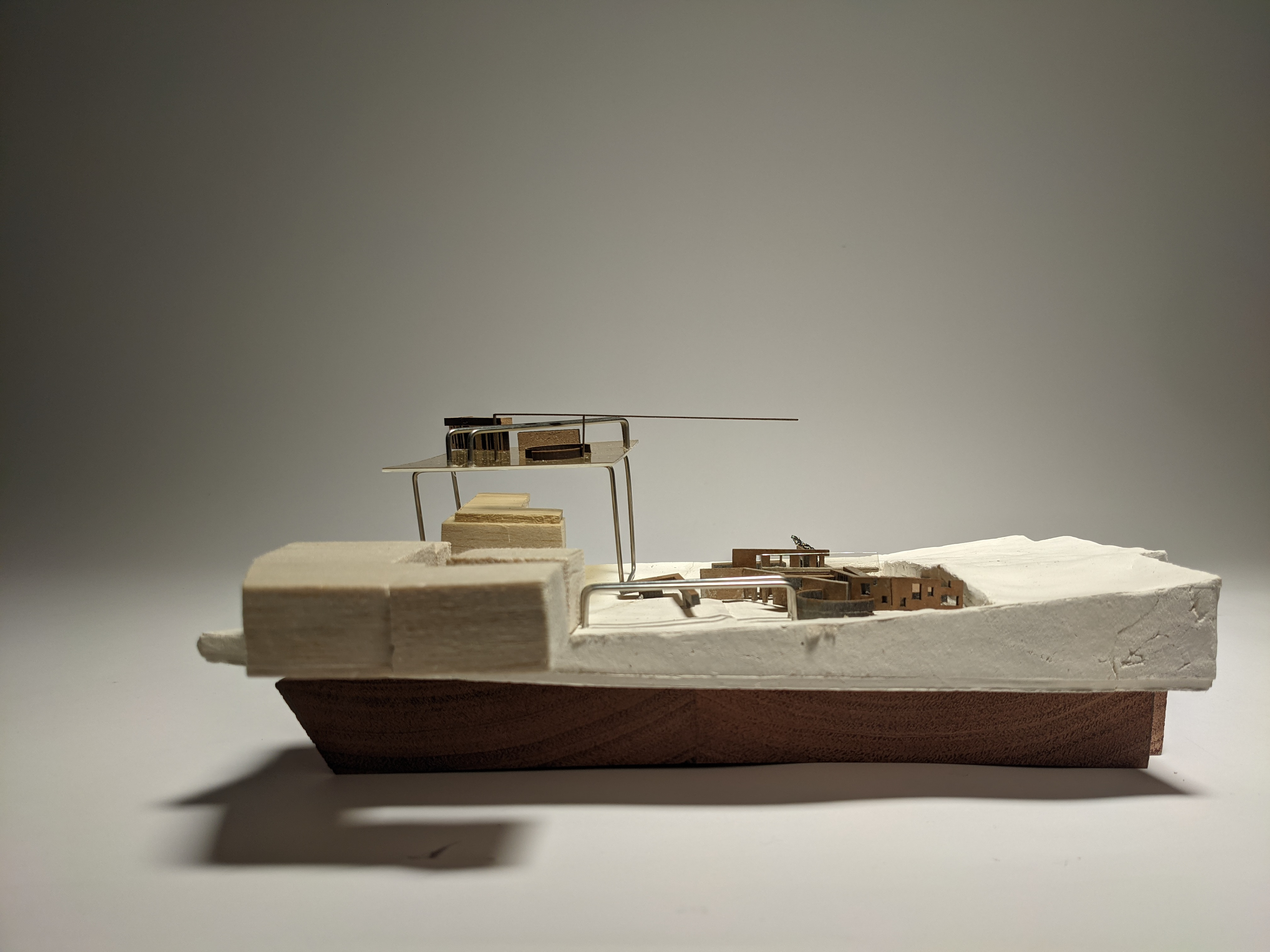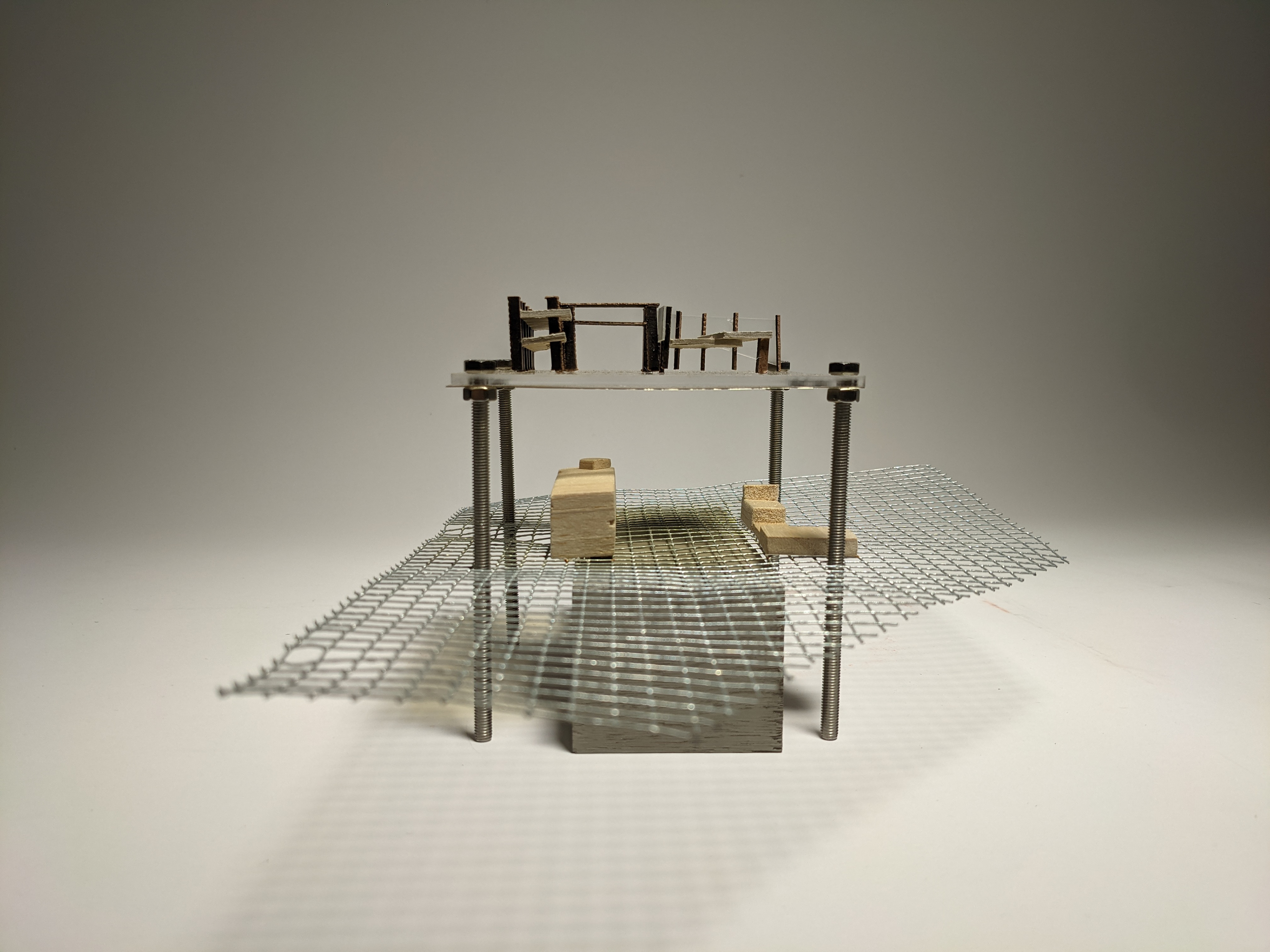This thesis is a reflection on the implications of architecture on the subjects of nostalgia and identity. The root of this lies in the correlation of field to memories and experientiality of spaces. A study of the derelict buildings and forsaken pockets in the urban fabric that lay in a state of abandonment and often become subjected to the capitalist-economic forces, annihilating them from the maps forever. These buildings and spaces, however non-monumental, interplay into creation of the identity of cities and are containers of memories from the past, breed alternate present atmospheres that are often seen as repulsive and considered hindrances to the development of cities. The argument here is that these spaces have imbued in them, meaning and lost stories, identities and unique experiences that can be re-breathed as modest identities of the city. The death of architecture can be beautifully structured alongside gentrification of landscapes. They can become ghosts of the city, existing as the voids, and potentially sprawling out of their place to infiltrate the ‘clean’ and the ‘new’.
Newcastle City Narrative_This Narrative superimposes and breaks down the major characteristics of the harbor, Uprooting the changing and severed shorelines, the transport coal chutes and railway lines that transformed the harbor over several years. It highlights the natural phenomenon of the shifting sand that was fenced of during colonization.
This project becomes a critique towards not only how heritage is engaged with, but uprooting the deep seeded histories of colonization and the rigid grid system that have permanently imprinted on the natural landscapes. These spaces can become places of surreal intersection of past and present, as an understanding of new methods of occupation and inhabitation of spaces. They become an experimental engagement with our lost histories of the land.
The derelict and rejected voids born out of a cycle of changing construct of identities of and within the city, often resulting from economic, social and political factors that become weeds of the replenished grasslands can potentially have breathe in them new lives through systems and performances that people then engage with. Rather than understanding heritage as preservation of facades, retaining parts of the building fronts as monumental entities,
these buildings that were once ‘spaces’, can be brought to life as ‘contained voids’ rather than ‘objects’.
these buildings that were once ‘spaces’, can be brought to life as ‘contained voids’ rather than ‘objects’.
Nostalgia of these spaces is understood in analogue with desire. Memories are fragmented and distorted; the conceptualization of which is allegorically explored in the proposed architecture. The thesis sits at the crux of a conflicting past: the aboriginal and colonial. It aims to work with the tensions between these critical historic identities. An influx of varied cultures can sit within these voids, at the crux of which lies sharing knowledge and education about the land we stand on.
They then become ‘ghost entities’ that survive through new cultures and inhabitations, performances and infrastructures that are reflecting of the past.
Image as industrial Steel City
Crises and Decay
Hunter Street: Capital hub to vandalized, disturbed and crime hub due to abandonment.
Crises and Decay
Hunter Street: Capital hub to vandalized, disturbed and crime hub due to abandonment.
Newcastle City Centre has remained dead and dysfunctional since the closure of BHP Industrial giant and its transformation from ‘Steel City’ to a commodified town of a ‘Problem City’. Once a thriving marketplace, central to a massive provider of economics and employment through port and railway activities, the CBD has become catalyst to a crisis and decay that followed post-industrialization. The act of abandonment of the main Hunter Street, as the city saw a decentralized creation of suburbia conditions, emergence of new shopping centers and ease of car accessibility shifted the inhabitants to these now gentrified suburbs. Now the street survives in the atmosphere of disturbances, vandalism, and street crime due to its abandonment. Its breathed new peculiar conditions of ‘subnature’ (David Gissen) within the derelict architecture of the space. In an attempt to revive the dying City Center, the place is witnessing a rapidly gentrified landscape, wiping out the atmospheres of the naturally evolved unique conditions of this City Center, alongside the history contained within these spaces.
Manifesto
The "Ghosts" Manifested (Architectonics)
[Theatre] Markets
[Forum] of [System]atic Transitions
[Grotto] Galleria for Exhaustion
[Three] Victorias
